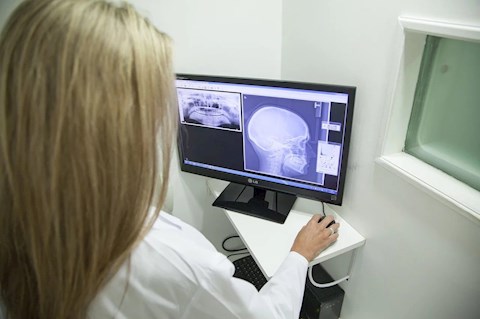Anonymous
Mar 27, 2020
How can X-rays take pictures of your bones?
Remember Superman’s X-ray vision? His eyes shot X-rays at a door; the beams bored through, and he could see what his enemies were up to on the other side. Only doors made of lead could foil Superman.
Lead is a good shield against X-rays. That’s why we wear heavy lead aprons at the dentist’s office. But Superman’s X-ray eyes came from the imagination of his creator. Eyes can’t shoot beams of light. Our eyes see when light from other sources, like the Sun, is reflected back from an object.
However, X-rays are indeed a kind of light—a kind that is invisible to us. X-ray light has a lot more energy than visible light. That’s how it can penetrate wooden doors—or skin and muscle.
1 view

1 view
1 answer
Sort By
Anonymous
Mar 27, 2020
X-rays and ordinary visible light are just part of the electromagnetic spectrum—light of varying wavelengths, frequencies, and energies. There’s the “visible” light our eyes are equipped to see (the light of a glowing lightbulb or the Sun). Ultraviolet light, more energetic than the ordinary violet we can see, is perfectly visible to some other animals, like bees. On a summer afternoon, as UV light invisibly tans our skin, a nearby bumblebee may be attracted to an ultraviolet design on a flower.
Meanwhile, all around us, other kinds of light fill the air, such as low-energy radio waves. Microwaves—less energtic than those in a microwave oven—stream from cell towers. Occasionally zooming by are higher-energy X-rays and gamma rays, penetrating Earth’s atmosphere from the Sun and distant stars.
The energy of photons of visible blue light is about 3.1 electron volts (eV). But X-ray photons carry about 100 to 100,000 eV. Like weakly tossed balls, most photons of visible light bounce off skin. But X-ray photons are so energetic—the fastballs of the electromagnetic spectrum—that they tear right through watery skin cells.
Mineral-rich bones and teeth are much denser than skin. Instead of sailing through, X-ray photons are stopped in their tracks and absorbed. The result: an image on film showing a broken bone or decayed tooth.
Even in the restricted doses used in medical imaging, X-rays could injure DNA at the heart of cells. During an X-ray of teeth, a lead apron can keep these super-energetic photons from penetrating other parts of the body.
Why lead? Lead is an inexpensive metal that’s soft enough to cut easily, but extremely dense. Density is the amount of matter packed into a space; lead is about 11 times as dense as the same volume of water. Each tiny atom of ordinary lead has 164 protons and electrons. (Compare that to oxygen’s measly 16, or hydrogen’s 2.)
A beam of light, which can slip through the empty spaces in flimsier materials, encounters many more atomic particles in lead. A lead apron contains a sheet about 1/100th to 1/50th inch thick (0.03 to 0.05 cm). The higher-energy the X-rays, the thicker the lead required to stop them.
0